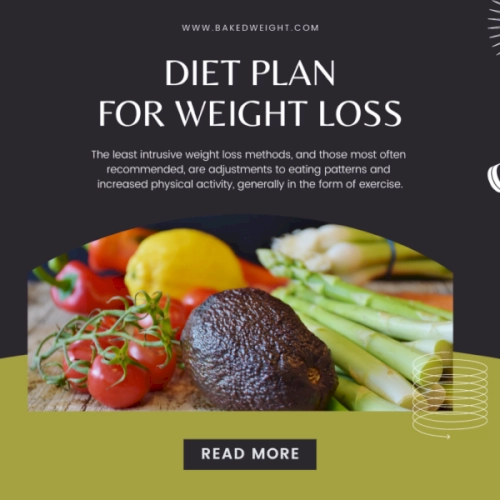Table of Contents
Everyday walking is an excellent way to lose weight and improve your overall health.
Several people believe that weight loss walking is more effective and efficient than other kinds of exercise for weight reduction.
Weight Loss Walking burns calories improves cardiovascular health, strengthens your muscles, increases bone density, and helps keep blood sugar levels stable.
The most important thing to remember while walking is to walk regularly. If you don’t feel like it, start by setting yourself a goal of 10 minutes at first. Then increase it gradually.
Is It Possible To Weight Loss By Walking For One Hour Everyday?

Yes, indeed, weight loss walking is the most effective and easy exercise to do for losing weight. According to the study, the amount of time you spend walking will have an effect on your weight reduction.
Weight loss isn’t the primary advantage of walking, but it is one of the most prominent reasons individuals begin to walk every day. Walking is enjoyable, long-lasting, and does not necessitate diet plans, weight loss walking plans, weight loss walking charts, or specific equipment to include in your daily routine.
For more experienced walkers, One hour a day is usually commonly advised as a daily target. Walking for 30 minutes per day is normally recommended by healthcare experts, but extending your walking to 60 minutes per day provides even greater health advantages. Plus, that additional hour of walking every day will get you close to your daily target of 10,000 steps (depending on your steps per kilometer/mile).
According to your calorie consumption, a 500-calorie deficit each day can result in 0.2–0.9 kg (0.5 – 2 pounds) of weight loss by walking every week.
After A Few Weeks Of Weight Loss Walking:
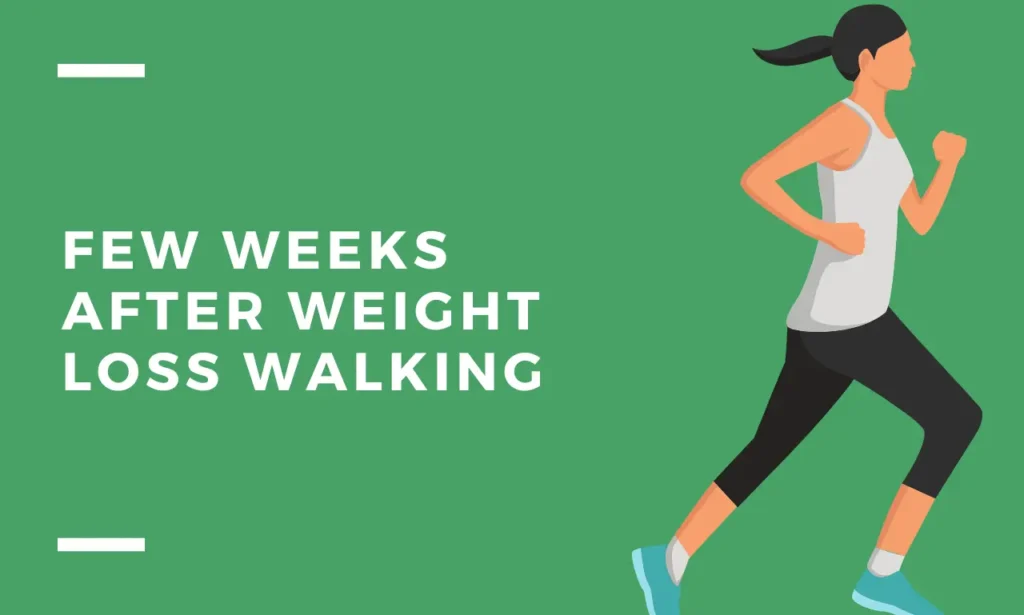
When you start walking and lose some weight after a few weeks, you’ll be motivated to keep going, but when you become healthier, you’ll find that you don’t need sweets as much as you usually used to.
You will find that walking decreases stress and anxiety and prevents stress-eating. You will enjoy your walks, releasing endorphins, and enhance your flexibility, agility, endurance, and mobility if you walk daily.
You will notice that the walk becomes easier with every successive day and that you will walk faster and cover more distance. However, after 4-6 months, you can extend your walking time.
If you have a minor injury, such as a sprained ankle or a hurting knee, bandage it or place it in a splint before taking a walk and taking it slowly. Blood circulation and oxygen supply will aid in the injury’s recovery.
More oxygen will be released with intense walking, and blood circulation, muscular tone, and skin will all enhance. Your fat will be converted to muscles, giving you a more muscular figure.
Walking has a lesser impact than running; it puts less strain on your joints. Running is a better option once you’ve dropped some of your weight because it puts less pressure on your joints now (also, try to run on grass or a treadmill because concrete will hurt your joints).
After a time, you’ll automatically optimize your eating habits because you’ll enjoy feeling better and, therefore, will pull toward healthier food options, making you less likely to stress eating or overeating.
Those unaware of the effect of weight loss walking do not get a grasp of anatomy and physiology. It also has psychological effects, making you feel less depressed and more energetic.
Follow This 21-Days Weight Loss Walking Plan.

It is a 21-days weight loss walking plan which you must follow to make walking a habit:
WEEK 1: (Easy Weight Loss Walking Plan)
Day 1: Start with a 10 minutes walk. Maintain a slow and steady pace.
Day 2: Go for a 12-minute walk. Maintain a slow and steady pace.
Day 3: Take a 15-minute walk. Maintain a slow and steady pace.
Day 4: Go for an 18-minute walk. It could be better to divide the minutes from now until the end of the week. 9 minutes of morning walk and 9 minutes of walking in the evening/night
Day 5: Go for a 20-minute walk. Maintain a slow and steady pace. Divide walking 10 minutes in the morning and 10 minutes in the evening/night.
Day 6: Take a 22-minute walk. Maintain a slow and steady pace. In the morning, walk 11 minutes, and in the evening/night, walk 11 minutes.
Day 7: Take a 30-minute walk. Maintain a slow and steady pace. Divide time accordingly.
WEEK 2: (Moderate Weight Loss Walking Plan)
Day 8: Go for a 14-minute walk. Easy for 2 minutes, quick for 10 minutes, then easy for 2 minutes to cool down.
Day 9: Go for a 16-minute walk at a moderate pace.
Day 10: Take an 18-minute walk. First 3 minutes easy, then 12 minutes fast, 3 minutes easy.
Day 11: Go for a 20-minute walk at a moderate speed.
Day 12: Go for a 22-minute walk. Easy for 4 minutes, quick for 14 minutes, and easy for 4 minutes.
Day 13: Jog at a steady speed for 24 minutes.
Day 14: Take a 26-minute walk. Easy for 5 minutes, quick for 16 minutes, and then easy for 5 minutes.
WEEK 3: (Slightly Hard Weight Loss Walking Plan)
Day 15: Take a 15-minute walk up and down the stairs or along a trail with gradually increasing height. Finish with 5 minutes of easy walking.
Day 16: Go for a 25-minute walk at a moderate pace.
Day 17: Take a 17-minute walk up and down the stairs or along a route with increasing elevation. Add 3 minutes of fast walking.
Day 18: Walk at a constant speed for 27 minutes.
Day 19: Take 17 minutes to walk up and down the stairs or along a route with increasing elevation. Finish with 3 minutes of simple walking to cool down.
Day 20: Go for a 30-minute walk at a comfortable pace.
Day 21: Take a 25-minute fast walk followed by an 8-minute gentle stroll.
Now keep doing it and follow this weight loss walking plan every month.
Weight Loss Walking Charts:
Based on the given body weights and walking speeds, this table calculates the number of calories burnt each hour:
| 2.0 mph (3.2 kph) | 2.5 mph (4.0 kph) | 3.0 mph (4.8 kph) | 3.5 mph (5.6 kph) | 4.0 mph (6.4 kph) | |
| 120 pounds (55 kg) | 154 | 165 | 193 | 237 | 275 |
| 150 pounds (68 kg) | 190 | 204 | 238 | 292 | 340 |
| 180 pounds (82 kg) | 230 | 246 | 287 | 353 | 451 |
| 210 pounds (95 kg) | 266 | 285 | 333 | 401 | 475 |
| 240 pounds (109 kg) | 305 | 327 | 382 | 469 | 545 |
| 270 pounds (123 kg) | 344 | 369 | 431 | 529 | 615 |
| 300 pounds (136 kg) | 381 | 408 | 476 | 585 | 680 |
What To Know About Weight Loss From Walking?
Although increasing one’s level of fitness is beneficial, there are several things one can do to optimize the amount of body fat burned while walking. The following are some suggestions:
Increase Your Pace

Daily Weight Loss Walking might help weight loss and get in better shape. Speed is crucial when jogging, cycling, or doing other sorts of cardio exercises. By walking quickly, a person can burn more calories than before when walking slowly.
According to a study conducted in Medicine & Science in Sports and Exercise, people burn extra calories when they raise their speed to a jog or run. This research also revealed that the runners weighed much less than walkers, implying that the rate of speed directly impacts how many pounds a person loses while running.
However, increasing the speed does not imply that a person must run; you can jog. However, vigorous walking can help you lose weight faster by burning more calories. Tips for becoming a faster walker or tips for increasing weight loss walking pace:
- Start with shorter strides
- Proper Foot Movement (Push off the toes of your back foot)
- Maintain head & torso position
- Bend your arms and swing them back and forth
- Glute Squeezing
- Exercising and incorporating strengthening muscle training
- Do interval training
- Stretch daily to the flexibility of muscles
Basic Training to Increase Weight Loss Walking Speed.
- Warm yourself up for ten minutes at a comfortable speed.
- Make a sprint for 30 seconds or 200 meters.
- After 30 seconds, slow down to a relaxed pace for 2-minute.
- For 8 to 12 times, repeat this 30-second speed / 2-minute rest pattern.
- Take a 10-minute stroll at a moderate speed to cool down.
Focus On The Form And Posture While Walking

While walking, it’s crucial to keep your form and posture in balance. Most of us probably don’t think about how we walk or whether we’re walking correctly. However, understanding how to walk correctly and with proper posture might help you to increase your pace while weight loss walking:
- Keep your bones and joints in perfect alignment.
- Reduce the wear and strain on your muscles, ligaments, and joints (don’t overdo).
- You should indeed avoid strain on the back, hip, neck, and legs.
- Minimize muscular pains and fatigue
- You should avoid risking injuries.
- Increase your stability and balance
At all times, you should walk with your eyes forward, since this assists in enhancing their walking pace and extending their stride. A person should concentrate on strengthening their abdominal muscles and glutes while walking. Do this throughout the whole walk or perhaps in short intervals.
This approach will aid in developing strength and preventing injury, allowing a person to continue their weight loss for a walking routine.
It’s not difficult to walk with the proper technique and posture. However, it does need to be aware of your movements.
What not to do while weight loss walking?
Avoid the following behaviors given below to prevent injuries or excessive wear and strain on your muscles and joints:
- Don’t look down
- Don’t take long strides at the beginning (increase it gradually)
- Don’t slouch
- Don’t lean forward or backward
- Don’t walk, jog, or sprint with the wrong shoes.
- Don’t roll your hips.
Benefits of having good posture while doing weight loss walking
There are several advantages of weight loss walking doing correctly with the proper technique and good posture:
- Pain-free muscles and joints
- Improve walking pace and distance
- More energy
- Better lung health
- Improved Blood Circulation
- Improved Digestion
- Fewer tension headaches
- Better balance and posture
and much more
Power Walking In Intervals.
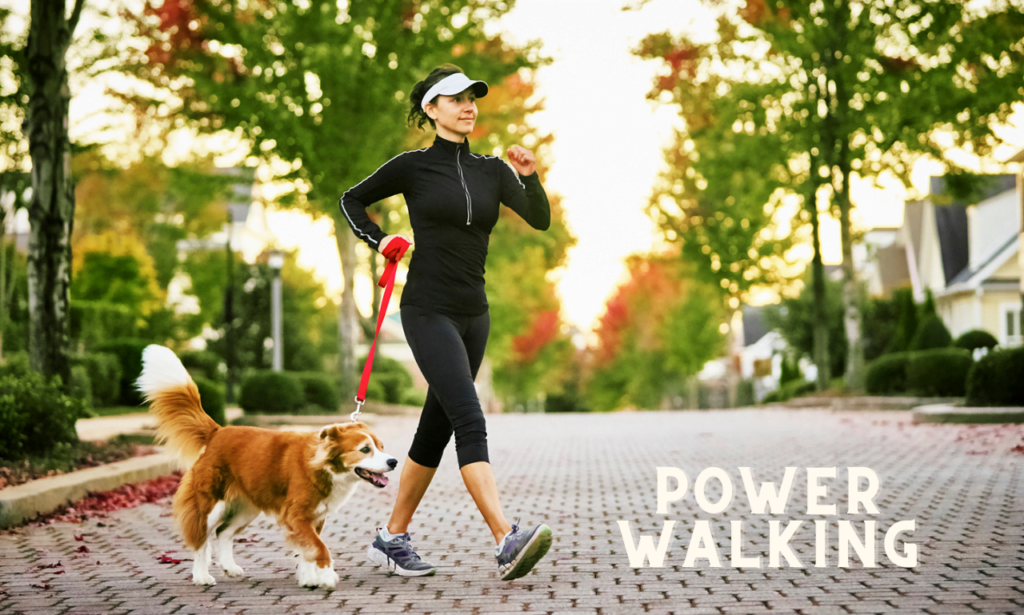
Power walking focuses on pace and arm movements, boosts your heart rate, and triggers other health advantages.
To give your everyday walk additional strength, try increasing your stride rate or slightly swinging your arms while you walk.
As per research, power walking has been found to reduce your chance of developing diabetes, high blood pressure, and perhaps some malignancies. Power walking in Intervals is an excellent way to stay in good shape, enhance your cardiovascular and joint health, and improve your mental health and wellbeing.
Make sure that you’re walking on safe terrain, wearing appropriate clothing, and taking precautions to ensure that this activity is as pleasurable as that is helpful.
To burn more calories while walking, a person should increase the intensity of their session by power walking in intervals.
To begin power walking in intervals, a person should warm up by walking for 5 to 10 minutes at a normal and relaxed pace. Then pick up the speed for 10 to 15 seconds at an uncomfortable yet tolerable rate before returning to a regular walking pace. This should be done throughout the duration of the walk or as long as the person is able.
Starting with 5 minutes of interval training every walk, a person should gradually add additional power walking intervals to their walks.
Do Shorter Walks Every Day.
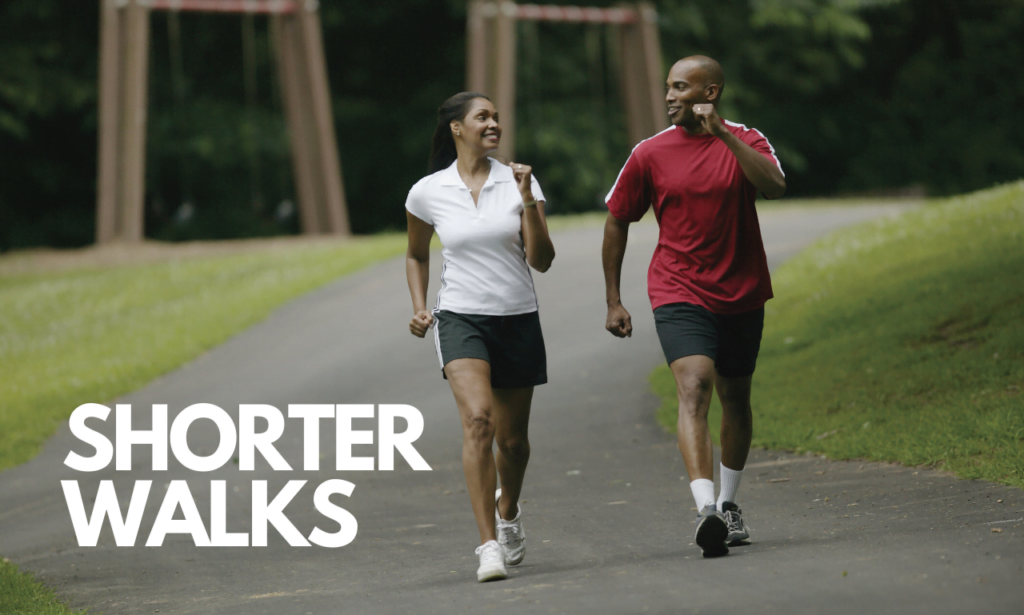
Long walks are beneficial; shorter but more frequent walks may also be helpful.
Shorter walks throughout the day, rather than a large walk once per day, may make it simpler for several individuals to continue their regular activities. Experts believe that walking after every meal gives health advantages as well.
A steady-pace walk for an hour will burn the same amount of calories as walking for 15 minutes four times per day. Mixing them into one long walk may have advantages, but you must consider what you love doing and what works within your schedule.
A 15-minute vigorous stroll will consist of around 2,000 steps. People who take significantly more steps during the day are much less likely to be overweight and have lower chances of heart disease, strokes, Type 2 diabetes, and other diseases.
The recommended target for many fitness trackers is 10,000 steps per day. Walking four 15-minute walks each day provides 8,000 steps to your day, which, when added with the rest of your daily steps, brings you over the 10,000-step mark that may help you lose weight.
If you all can’t set down an hour a day for weight loss walking, focus on getting some 15-minute walks. Once you’ve established the 15-minute walk routine, choose a day or two a week when you can go for a longer walk.
Use proper posture and walking skills to get the most out of your 15-minute walks. After a few minutes of gentle warm-up, increase your speed to a faster pace where you can clearly breathe. To obtain the maximum advantages from burning calories and doing good for your health, spend most of your weight loss walking in this moderate-intensity zone.
Make walking part of your daily habit.
Try to make walking a daily routine – for example, invest your spare time and start walking around the same time per day. It does not matter at all if you are doing your walk during the day or at night. Do what will be most convenient for you! Some will believe that inviting someone to walk with you can help make it a regular pastime. Some individuals find that maintaining an activity journal or record makes it simpler.
If it’s too difficult to walk about 30 minutes per day, then perform frequent short sessions of 10 minutes three to four times a day and gradually work up to long periods. However, if your objective is to reduce weight, you will need to conduct physical exercise for more than 30 minutes each and every day. You may still do this by beginning with short activity sessions throughout the day and escalating them as your fitness improves.
Physical exercise integrated into a daily weight loss walking plan is also one of the most efficient strategies to aid with losing weight and maintaining the weight off after it’s reduced.
Some recommendations to incorporate weight loss walking into your regular routine involve:
- Instead of using the elevator, take the steps (for at least part of the way).
- Listen to music or motivational talk while jogging.
- Get out of public transit one stop sooner and normally walk to work or home.
- Talk and Walk with your friends, partner, or parents.
- Walk (don’t drive) to the neighborhood stores.
- Walk with the dog (or your neighbor’s dog).
Wear A Weighted Vest While Walking.

Adding some weight to an exercise will increase the number of your calories burned.
Since human bodies need more energy to do the same activity than someone who is not so hefty, heavier individuals burn more calories; putting on a weighted vest while walking helps a person’s bodywork even harder throughout a walk.
According to one research, people who walked at 2.5 mph on a flat surface whilst wearing a weighted vest containing 15% of their body mass will burn 12 percent more calories than others who did not carry weights.
If a weighted vest can help burn more calories, a person should avoid wearing ankle or wrist weights or lugging weights inside a backpack or perhaps in their hands. If you want to walk in a good posture, we suggest adding ankle and wrist weights. Muscular imbalances and injury are possible outcomes of both activities.
While wearing a weighted jacket, precautions should always be taken. Before wearing a weighted vest, like with any new workout, a person should consult with their doctor. Weighted vests should not be worn by anyone with previous back or neck problems.
People who can wear a weighted vest securely will likely observe an increase in their calorie burn within a few weeks. Some individuals, but not all, benefit from wearing ankle, hand, or backpack weights.
Although there are several advantages to exercising or walking with weights, having additional weight on your joints might raise your risk of injury. At first, be relaxed and take it easy. Then gradually build up your endurance.
5 Things You Must Consider Doing While Weight Loss Walking Everyday
Overcome Your Excuses
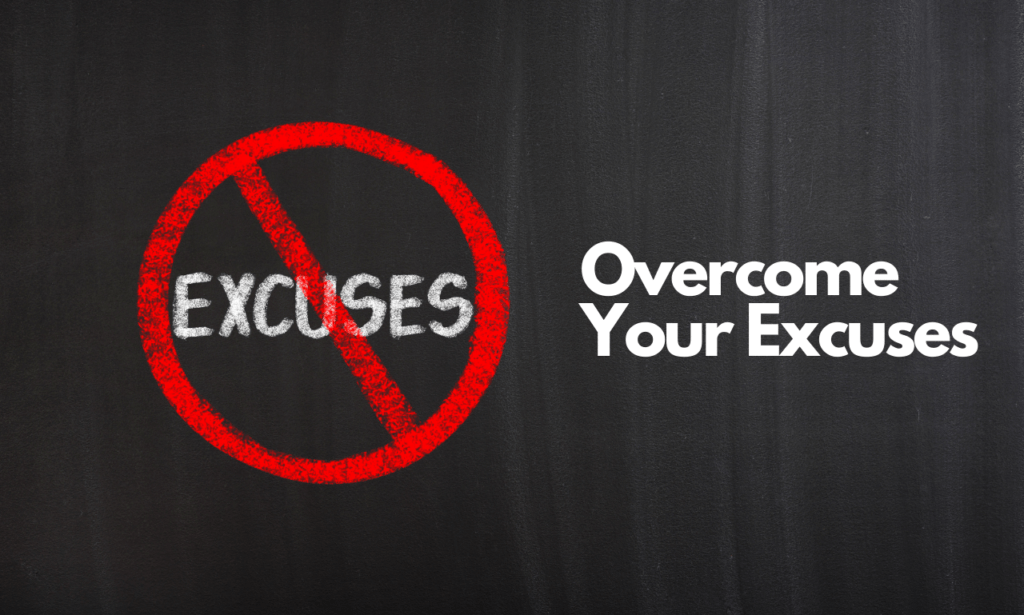
There are a bunch of reasons to postpone your daily walking or workout. If you want to weight loss by walking, you must overcome all excuses for not walking. Every. Single. Day. There shouldn’t be any excuses phrases such as:
- I was too busy to walk
- I was too tired to wake up
- It was too cold / too hot outside
- I’m too old to walk
- Walking hurts me, and it’s not good for my body
- I don’t want to walk alone
- Walking is boring
- I have to go to work today
and more
You should maintain an activity record of being truthful about how much exercise you are getting or how many steps accomplished today and evaluate that at the end of every week. Focus on your areas of strength you’ve accomplished so far, whether it’s a goal of 5000 Steps per day or something else—and give yourself little appreciation for it, but if you intentionally did it and didn’t meet your objective, give yourself some punishment.
Reevaluate and try once again the following week.
Work Hard And Take Deep Breaths.

If you walk rapidly, you’ll breathe faster than you normally do. That’s a positive indicator that you’re approaching a fat-burning heart rate zone.
To ensure that you can get there, warm yourself up at a moderate pace. Then go for a 30 to 60-minute brisk walk. When you engage in mild to intense exercise, you will get health advantages and burn more calories than usual. If you are not breathing appropriately during exercise, mainly while walking, your respiration will speed and become difficult.
There are good and wrong techniques to breathe while exercising, particularly during weight loss walking or fast walking. Controlling your breath helps boost your endurance and cardiovascular health and your metabolism, emotions, and energy levels. Breathing improperly, on the other hand, causes rapid lethargy and exhaustion.
You may make this healthful kind of outdoor exercise even more fun by learning appropriate breathing techniques.
When walking, begin by breathing and exhaling through your nose, and ensure that the inhalation and exhalation times are equal.
If you want to speed up, you can mouth-breathe while maintaining the same inhalation/exhalation pattern. Holding your breath while walking fast, or running is never a good idea.
Practicing diaphragmatic breathing requires time, but it’s easy once you get the hang of it. Follow these:
- On a count of five, inhale by completely expanding your abdomen.
- Allow your lungs to fill fully before bringing your shoulders back.
- On a count of five, exhale by drawing your belly towards your spine.
- Keep your spine upright while pressing the air out of your lungs using your diaphragm.
- Repeat. And. Repeat.
You can either reduce the number or lower your walking speed if you can’t keep a count of five. You may be able to prolong the count if you’re in excellent form. This may not come easy at first, but abdominal breathing will become completely automatic with persistence.
If you feel out of breathing while walking, stop and put your hands over your head. Now, deeply and gradually breathe in / out until your breathing recovers to normal.
Be Aware Of Your Eating Habits.
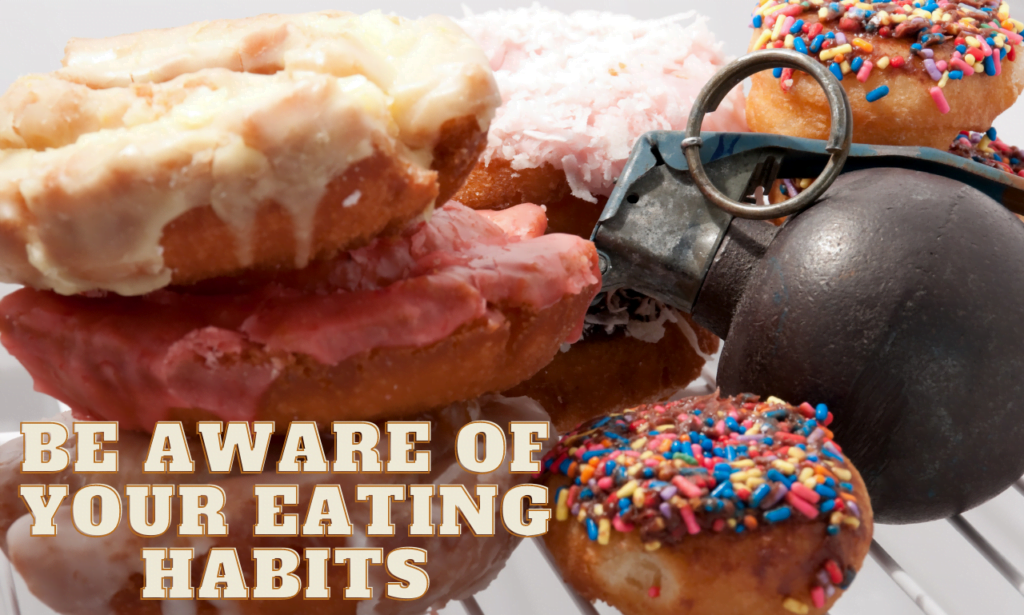
You must be truthful with yourself about how much you consume to lose weight. The easiest method to achieve this is to keep a food diary for several days. You could keep track on paper or with a smartphone app, or you can use your smartphone to snap photographs of everything you eat.
Many fitness trackers, such as Fitbit, come with or can connect to a food-logging app that may help you assess your diet and track your progress towards your objectives.
Mindfulness is a kind of meditation that teaches you to detect and manage your emotions and sensory experiences. Mindful eating is based on the Buddhist notion of mindfulness.
It treats various problems, including eating disorders, depression, anxiousness, and different food-related behaviors.
Eating mindfully is all about paying full attention to your feelings, emotions, and bodily signals when it comes to eating.
Mindful eating implies the following:
- Eat slowly and without interruption
- Focusing with all your concentration on your meal and the eating experience.
- Listen to your body’s hunger signals and eat just until you’re satisfied (but don’t overeat)
- Recognizing the difference between actual hunger and non-hunger eating causes.
- Colors, scents, noises, textures, and tastes will all be used to activate your senses.
- Learning to deal with food-related guilt and anxiety.
- Eating to keep one’s general health and happiness.
- Seeing how food affects your mood and appearance.
- Savoring the taste of your food
These things enable you to substitute automatic thoughts and responses with much more mindful, healthy ones. Mindful eating will help you regain control of your eating habits. This strategy is worth considering if your traditional diets plan for weight loss walking plan hasn’t worked for you.
Change Your Walking Paths Weekly

Walking does not have to be tiresome, and it takes almost little effort to spice up your everyday walk. Changing up your walking routes, length of the walk, whom you walk with, and even what time of the day these changes in your walk can keep your exercises fresh and exciting, encouraging you to continue pushing yourself for getting amazing results.
If you usually walk the same route, at the same speed, and with the same treadmill activity, change it. Speedy days, easy days, interval days, and long slow days all have their own set of advantages. Change your walking routines and routes to avoid monotony and make you feel motivated.
Walking at a different time of day could radically change the nature of the location you’re traveling through. Early in the morning, even the busiest towns can indeed be remarkably peaceful. Updating the timing of your weight loss walking might give you a new perspective on familiar places.
Skip High-Calorie Beverages

How many calories are there in the sodas, fruit juices, teas and coffees, and carbonated beverages you consume daily? Is it possible for you to become habituated to drinking water instead of black coffee or tea? Yes, indeed, but at the beginning, you will feel some trouble skipping your favorite beverages.
While exercising or weight loss walking, you’ll need water, and if you’re sweating and walking for more than 60 minutes, you’ll probably require electrolytes replenishment. However, you do not need to consume any more calories. Drinking your calories, particularly in non-fiber or protein-rich beverages, will cause people to consume more calories than you’d ever because these beverages are not nourishing.
Intake These Drinks With Your Weight Loss Walking Plan
If a person includes the following drinks into a healthy diet, regular exercise, and weight loss walking plan, then it may help people lose weight:
1: Water
Water is one of the healthiest beverages that has no calories, improves overall metabolism and physiological functions, and helps with detoxification and other benefits.
Many health organizations, including the CDC (Centers for Disease Control and Prevention), advise individuals to drink at least 5L of water every day who want to lose weight as soon as possible instead of more calorie drinks.
2: Tea
Researchers discovered a correlation between frequent drinking of green and black tea and decreased risk of cardiovascular disease, certain cancers, and diabetes.
Additional research suggests that two major chemicals in green tea, caffeine and epigallocatechin gallate, will help individuals lose weight and keep it all off.
However, a review of many trials indicated that losing weight with green tea was not statistically significant in most instances. Green tea made a difference in certain cases, but the methods were more extensive than merely drinking the tea. Drink tea to a certain limit.
3: Carbonated Water
Sugary carbonated drinks, such as sodas, may be replaced with carbonated or sparkling water. Carbonated water will make people feel fuller, causing them to eat fewer calories.
4: Apple Cider Vinegar
Apple cider vinegar is said to provide various health benefits, particularly weight loss. According to research, individuals on a low-calorie diet who also took apple cider vinegar lost more weight and had lower cholesterol levels than those on a diet alone.
5: Ginger Contain Drinks
For thousands of years, ginger has been recommended to boost healthy digestion. Ginger contains anti-inflammatory effects and can be added to hot tea or sparkling water for more health benefits.
On the other hand, some ginger beverages have additional sugar, which stimulates inflammation and weight gain.
Drinking a hot tea with ginger powder reduced appetite, boosted fullness, and stimulated the body to burn calories, but research is still going on. If you are intolerable to ginger, avoid consuming it.
6: Meal Replacement Shakes / Smoothies
Meal replacement smoothies could be a good alternative for those who want to lose weight with good taste, especially if they have a busy lifestyle and find it hard to make time for healthy meals.
Although eating a well-balanced, nutrient-dense meal or snack is optimum, a replacement shake may be nutritious and delicious with our weight loss walking plan. Many of these drinks include a variety of essential minerals, protein, and fiber while being lower in calories than processed meals.
Not all meal replacement shakes are healthy. It’s important to pay attention to the components and nutritional information printed on the packet. If you are making it on your own, then make it by measuring its quantity according to your diet.
If someone wants to attempt meal replacement shakes, they should read the labels carefully and avoid those with unhealthy components like added sugars, artificial sweeteners, and corn syrups.
According to some studies, Meal replacement shakes may help individuals lose some weight and maintain healthy body weight.
7: Protein Shakes
Protein drinks and meal replacement shakes lack the nutrients of a healthy balanced diet.
Consuming a high protein diet, on the other hand, will offer you less hunger and sustain a sensation of fullness. As a consequence, after drinking a protein shake, a person may eat fewer calories, which may aid in weight loss.
However, it’s vital to remember that protein shakes include calories. Like meal replacement shakes, protein drinks should be checked for unhealthy ingredients.
Avoid These Drinks With Your Weight Loss Walking Plan
The below-listed drinks are harmful to your health, so if you are determined for losing weight or stay healthy, avoid these drinks:
1: Soft Drinks
Sweetened, carbonated liquids like sodas, Pepsi, coca-cola, etc. are high in calories and poor in nutrients, so they don’t help you lose weight.
Depending on the drink, a 355 ml (12 ounces) can of soda contains 10–13 teaspoons (tsp) of sweetness.
2: Smoothies And Fruit Juices.
Fruit juices provide several nutritional advantages. However, on the other hand, juices contain so much sweetness that they contribute a lot of high calories to the diet, even if the sugar is organically generated.
A 12-ounce serving of orange juice includes ten teaspoons of sugar, while a smoothie drink contains even more.
When drinking juice, it’s vital to buy 100 percent fruit juice with no added sugar and keep quantity proportions in mind.
3: Energy Drinks.
Energy and sports drinks have certain advantages as well, although they are usually rich in calories. The numbers below are for 12 oz of each kind of beverage:
Sports Drinks: 5–10 teaspoons of sugar
Energy Drinks: 10–14 teaspoons of sugar
Furthermore, energy drinks often include artificial sweeteners, which may harm one’s health. They are good for instant energy, but in the long term, they are harmful.
4: Coffee Shop Drinks.
Sugary beverages and sweetened teas may add a lot of sugar and calories to your diet. 3–8 teaspoons of sugar per 12-ounce glass of iced tea
Coffee drinks usually include more sugar than the daily sugar allowance, which is six teaspoons for women and nine teaspoons for men.
5: Alcohol.
For various reasons, alcohol does not pair well together with weight reduction:
- Alcoholic beverages are high in calories.
- According to a trustworthy source, a 12-ounce beer has 150 calories, whereas a 5-ounce glass of white wine contains 100 calories.
- Drinks with mixers, such as fruit juice or soda, will have even more calories.
- Drinking alcohol will lower inhibitions, making dieting more likely to consume meals they’re trying to avoid.
- Drinking disrupts digestion and sleep, making weight reduction more difficult.
Below Are Some Weight Loss Walking Tips Before You Leave Your House:
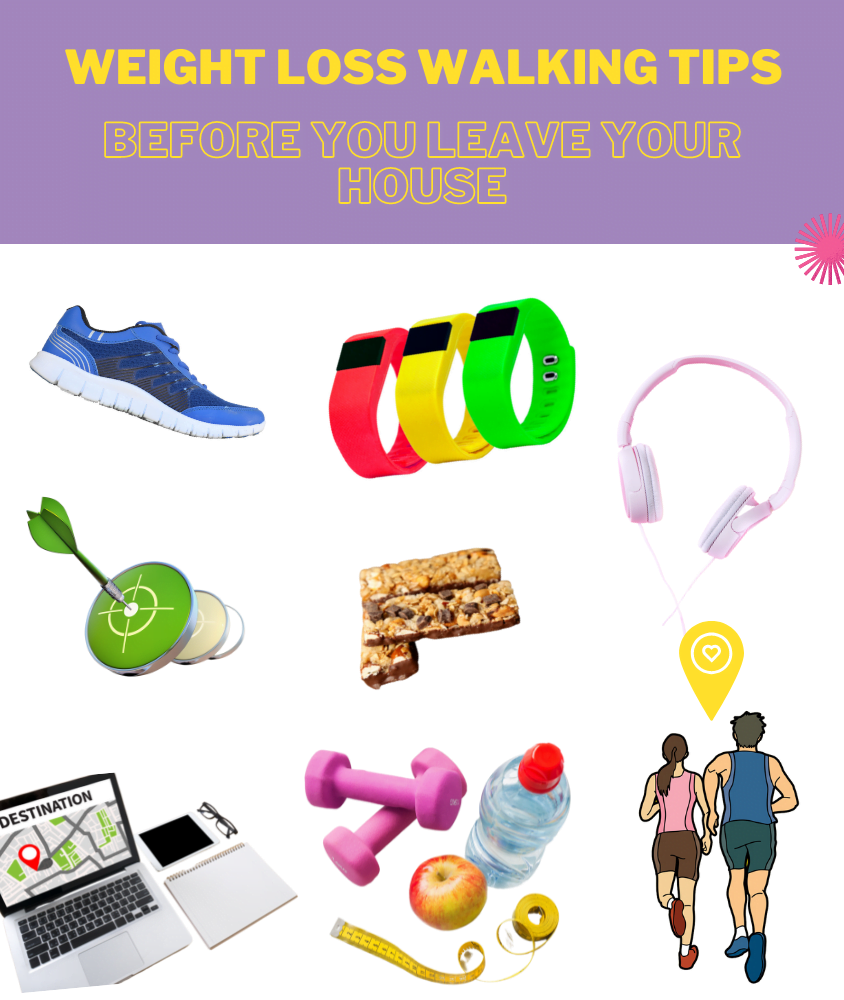
Following the recommendations below, you’ll realize how weight loss from walking is a low-impact strategy to achieve your fitness objectives.
Choose the Right Walking Shoes.
You must have trail running shoes for walking, jogging, and running. They must be flexible, comfortable, lightweight, and cushioned.
Set A Goal
Before beginning your daily walking, running, or jogging, you must set a goal. According to research, most people get results quickly for losing weight if they set a goal and accomplish it. For example, set a goal of at least 5,000 steps per day while walking.
Use A Pedometer
It’s crucial to keep track of your daily steps using a pedometer, fitness band, or smartphone app. You must know how many steps you take on an average day to lose weight and how to optimize your weight loss walking plan.
Make A Personalized Playlist For Walking.
Before you think about putting on your shoes, select the music playlist you’d like to listen to while you are walking, jogging, or running. To get the most out of your walking, you need good soundtracks to keep you going, and the greatest thing is that you may not realize the additional work you put in with every beat. According to the research conducted by the Frontiers on Psychology, music with 170 to 190 BPM has improved physical performance, even for walkers.
Select Your Today’s Route
Every day it’s a good thing to know exactly where you’ll be walking. You’ll be able to walk confidently, knowing exactly where you’re going, and not spend any time trying to figure out a path on the spot. Make a few different plans with varying lengths, slopes, and terrains. With a few route variations, you can keep your everyday walking from becoming boring.
Grab Some Light Snacks
If you feel hungry after following your weight loss walking plan, you must eat some light snacks after walking. For example, you can have an apple, a protein bar with fewer calories, etc.
Find Yourself A Walking Buddy
Numerous studies suggest that having a walking buddy or a strong support network group is critical for achieving weight reduction. Individuals, who are part of social groups, or walk with their companions, lose more weight than those who do it alone. If you happen to have a dog, take them with you when you go for a walk. It’s also great.
Increase Your Walking Pace
Many experts recommend that increasing your pace while walking will significantly affect your weight loss than continuously walking at the same speed.
Add Some Workout While Walking
Add at least 10 minutes of high-intensity workout to your weight loss walking plan on three nonconsecutive days of each week. This small change will help you burn extra fat during and after these cardio-intensive exercises. On alternate days, engage in 30 minutes of moderate-intensity exercise activities.
Stay Rehydrated
Maintaining sufficient hydration is also critical in your walking-based weight reduction goals. Since the human body contains more water than any other substance, staying hydrated is crucial for almost all bodily systems to function properly. Staying hydrated has a significant influence on our brain performance and energy levels. Even a modest type of dehydration, 1-3%, has been shown to impair brain function. This includes mood and energy, both of which are important factors in walking efficiently and effectively.
The Bottom Line
Weight Loss Walking is an excellent form of exercise, and walking for one hour every day will help you immensely to lose weight and improve your health. Weight loss from walking is the most effective and easiest way to lose weight. It’s efficient since it aids in the growth of caloric burn.
At the same time, you must keep track of your total daily calorie consumption. Also, install some applications on your smartphone to keep track of your daily workout.
To achieve your weight loss target, remember to follow your weight loss walking plan. It’s also an awesome idea to keep changing your routine from time to time and to keep yourself motivated.
Follow us to get more information about Weight Loss Walking at Baked Weight.


